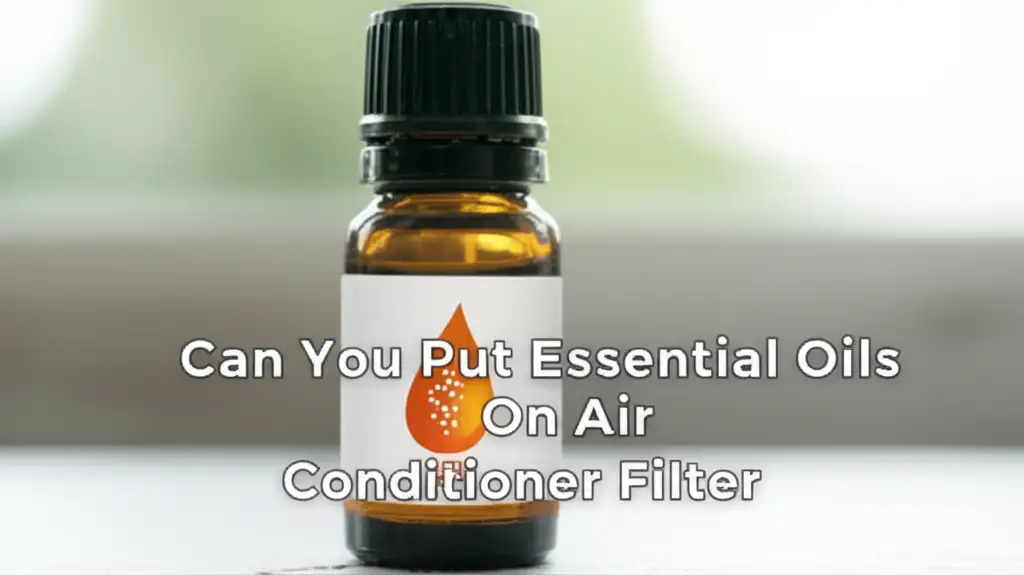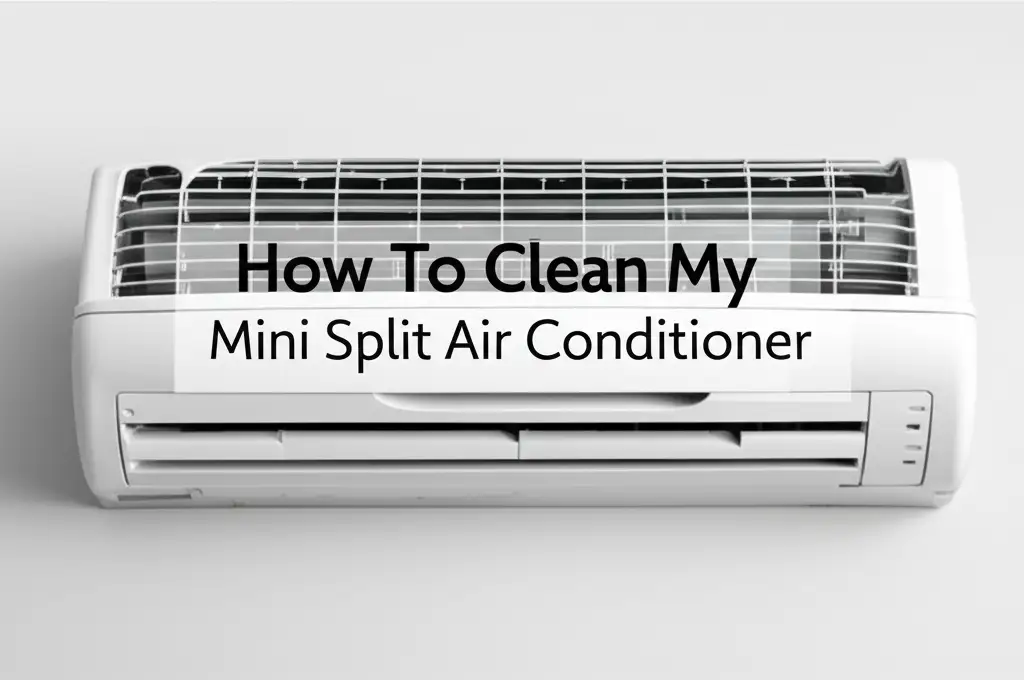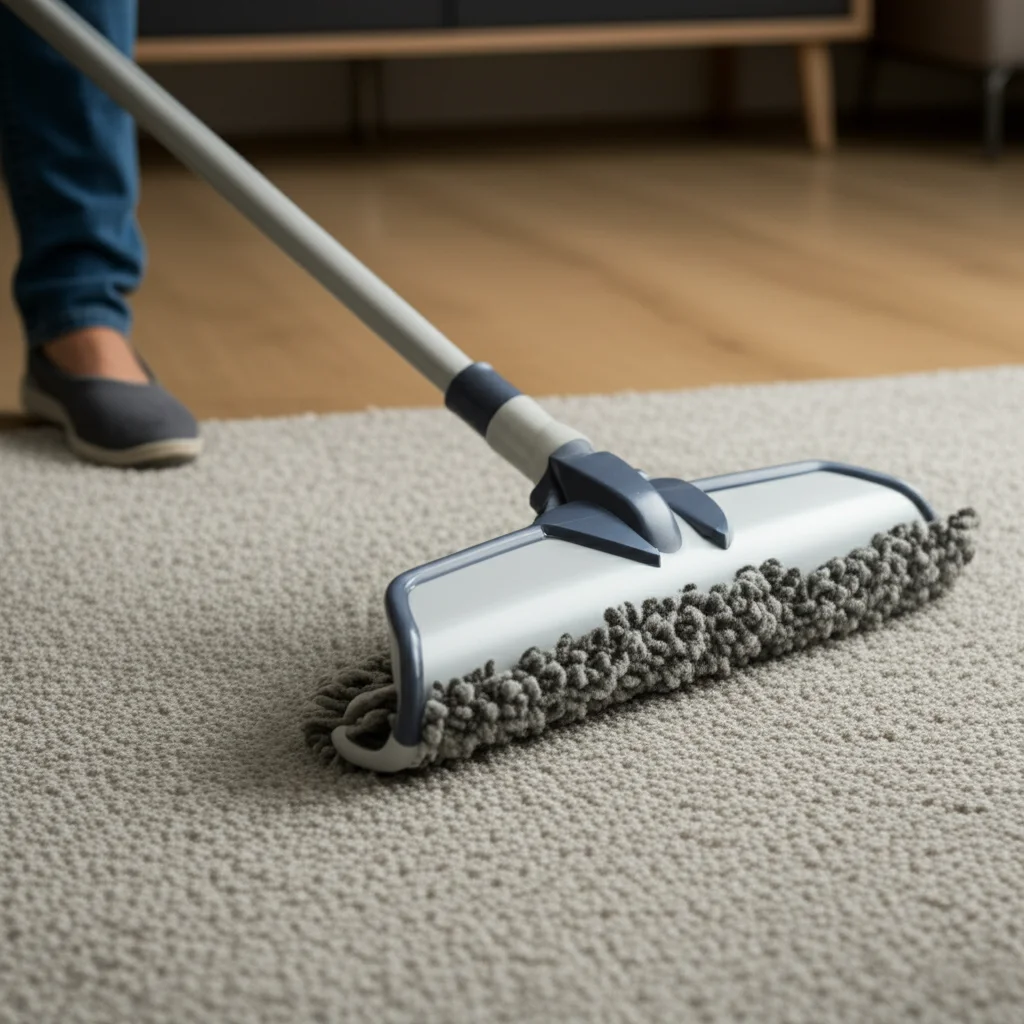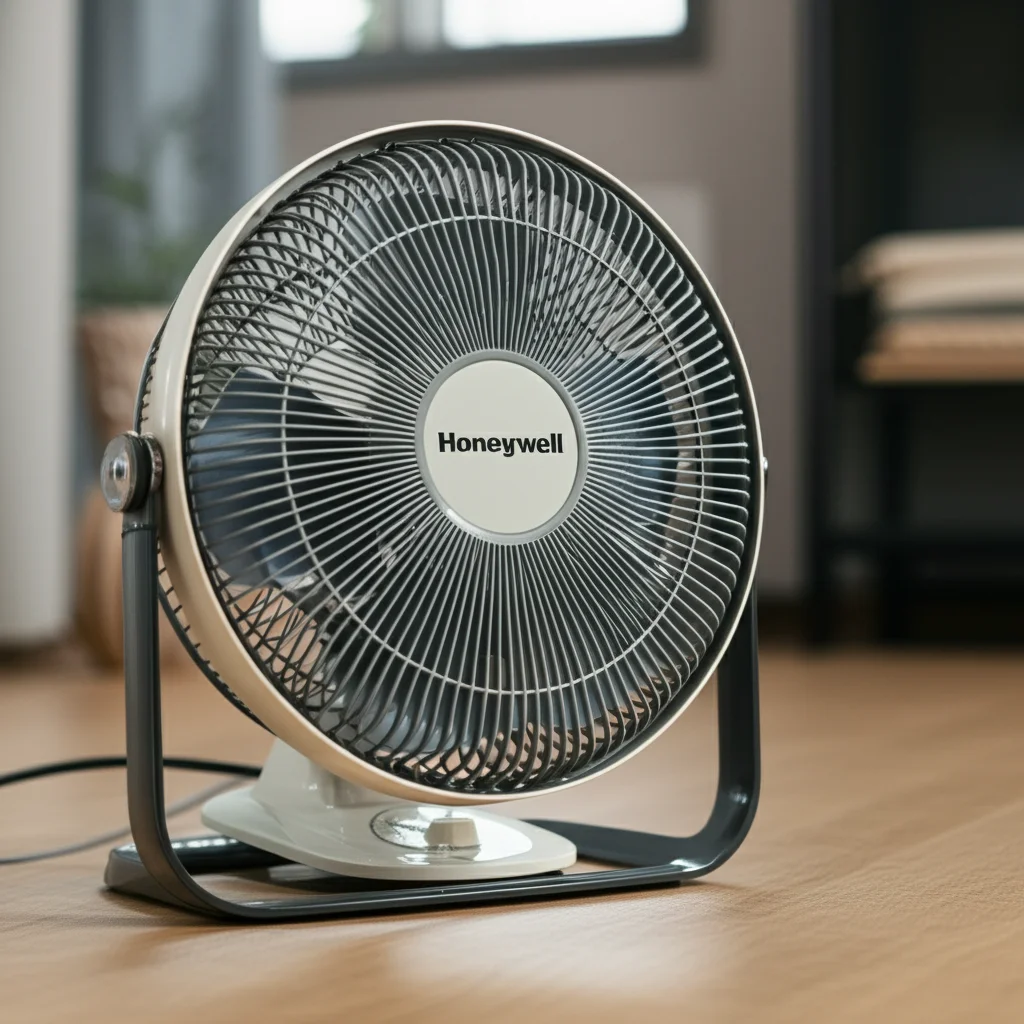· Katria Melrose · Home Safety, Carpet Care, Child Health · 17 min read
Can Kid Be Around Chemical Carpet Cleaning
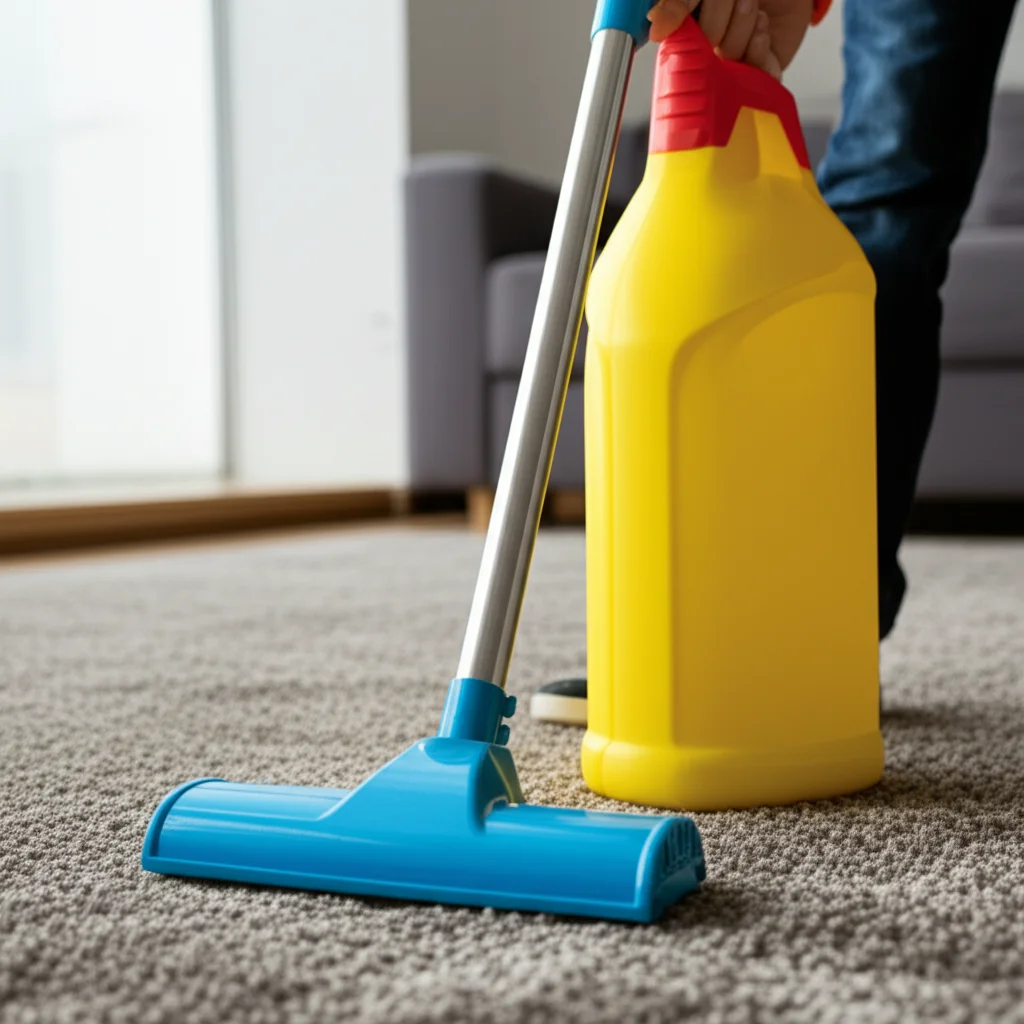
Is Chemical Carpet Cleaning Safe for Kids?
As parents, we constantly think about our children’s safety. This includes the environment inside our homes. A common question arises when it is time to clean carpets: “Can kid be around chemical carpet cleaning?” This question holds serious weight. Chemical carpet cleaning often involves strong agents. These agents can release fumes and residues. It is important to know if these substances pose a risk to young children.
We understand your concerns about chemical carpet cleaning and your kids. Children spend a lot of time playing on floors. Their developing bodies are more sensitive to chemicals. This article provides clear answers. We will explore the risks of chemical carpet cleaning. We will also share important precautions to take. We discuss safe drying times and better cleaning alternatives. Our goal is to help you create a safe home.
Takeaway
Protecting children during and after chemical carpet cleaning is important. Follow these key steps:
- Keep children and pets away from the cleaning area during and immediately after the process.
- Ensure excellent ventilation for at least 24-72 hours post-cleaning.
- Understand the specific drying time required for your carpet type and cleaning method.
- Consider using non-toxic or eco-friendly cleaning methods whenever possible.
- Vacuum carpets thoroughly once completely dry to remove any lingering residues.
Clear, Concise Answer
It is generally not recommended for kids to be around chemical carpet cleaning due to potential health risks from fumes and residues. Children should stay out of the treated area during cleaning and until the carpet is completely dry and well-ventilated, often 24-72 hours.
Understanding the Risks of Chemical Carpet Cleaning
When we consider chemical carpet cleaning, we think about dirt removal. We also must consider what chemicals we are introducing into our home. Many carpet cleaning products contain harsh chemicals. These chemicals help break down tough stains. However, they can also affect indoor air quality. My primary concern is always how these substances affect my children.
Children breathe faster than adults. They also spend more time close to the floor. This increases their exposure to chemicals in carpets. Their immune systems and organs are still developing. This makes them more vulnerable to chemical exposure. It is important to know the specific dangers. We can then make informed choices for our families.
Volatile Organic Compounds (VOCs)
Many chemical carpet cleaning solutions contain Volatile Organic Compounds, or VOCs. These are gases emitted from certain solids or liquids. VOCs can be harmful to human health. They include substances like formaldehyde and benzene. These are common in many household products. When carpets are cleaned, these VOCs can release into the air.
The release of VOCs is higher during and right after cleaning. The “new carpet” or “clean carpet” smell often comes from these VOCs. This smell can linger for days. Breathing in high levels of VOCs can cause problems. It is a risk we need to manage carefully.
Immediate and Long-Term Health Concerns
Exposure to VOCs from chemical carpet cleaning can cause immediate symptoms. These include headaches, dizziness, and nausea. Some people might experience eye, nose, and throat irritation. Children, due to their smaller size, are more susceptible. They might show these symptoms more quickly.
For some, long-term exposure can lead to more serious issues. This can include respiratory problems, allergies, and asthma. Some VOCs are known carcinogens. This means they can cause cancer over a long time. Protecting children from these risks is a top priority for any parent.
Vulnerability of Children
Children are especially vulnerable to chemical exposure. Their bodies process toxins differently than adults. Their immune systems are not fully developed. This means they cannot fight off harmful substances as effectively. Kids also play directly on carpets. They put their hands in their mouths. This increases the chance of ingesting residues.
Their breathing zones are closer to the carpet surface. This means they inhale more concentrated levels of airborne chemicals. Think about how much time a toddler spends crawling. Every surface becomes a potential source of exposure. Considering how to deep clean carpet without machine can be a way to avoid some of these chemical exposures, especially if you opt for natural methods. We must always consider our children’s unique sensitivities.
Key Precautions During Chemical Carpet Cleaning
You have decided to proceed with chemical carpet cleaning. It is crucial to take strong precautions. My main goal is to minimize exposure for my children. Proper planning and execution are essential. These steps help ensure their safety. We need to create a barrier between the chemicals and our kids.
Always read the labels on cleaning products. Professional cleaners should tell you what products they use. Ask about their safety data sheets. This information helps you understand potential risks. It allows you to plan your safety measures effectively.
Ensuring Proper Ventilation
Ventilation is the most important step during and after cleaning. Open windows and doors. Use fans to circulate air. This helps to remove airborne chemicals quickly. Good airflow reduces the concentration of VOCs. It speeds up the drying process too.
Leave windows open for several hours after cleaning. If possible, keep them open for a full day. The fresh air helps dissipate fumes. It also helps prevent mildew from forming. Proper ventilation creates a safer environment.
Keeping Kids Away from the Cleaning Area
It is simple: keep children out of the cleaning zone. This means during the cleaning process. It also means during the drying time. The safest place for kids is away from the house. Send them to a relative’s house. Or take them to a park for several hours. This prevents any direct contact.
If leaving the house is not an option, isolate the cleaned area. Close doors to rooms with freshly cleaned carpet. Use baby gates to block access. Explain to older children why they cannot go on the carpet. Make sure pets are also kept away. Strong chemical cleaners, like those sometimes needed when you how to clean dog urine from carpet, require these strict measures.
Post-Cleaning Airing Out
The air out period extends beyond the initial cleaning. VOCs can off-gas for days. Continue to ventilate your home for at least 24 to 72 hours. This depends on the specific chemicals used. It also depends on the drying time. Keep windows slightly ajar if weather permits.
Use air purifiers with activated carbon filters. These can help remove airborne chemicals. This extra step provides additional safety. It improves the overall air quality in your home. Be thorough with this step. Your children’s health is worth the effort.
Drying Times and Re-entry for Children
Understanding drying times is not just about convenience. It is vital for safety. A damp carpet can trap chemicals. It also creates a breeding ground for mold and mildew. This can cause respiratory issues. Knowing when it is truly safe for kids to return is paramount. My goal is always to make sure the carpet is completely dry and safe before my children touch it.
Professional cleaners often provide an estimated drying time. However, many factors can influence this. It is important to assess the situation yourself. Trust your senses. The carpet should feel completely dry to the touch. There should be no lingering chemical smell.
Understanding Carpet Drying Process
Carpet drying involves evaporation. Water and cleaning solutions must completely leave the fibers. Professional hot water extraction often leaves carpets damp. The amount of water extracted plays a big role. More powerful machines extract more water. This leads to faster drying.
Air circulation speeds up evaporation. Humidity levels in your home also affect drying. High humidity makes drying slower. Cold temperatures can also slow down the process. A wet carpet is not a safe carpet for children. It holds more chemical residue.
Recommended Re-entry Times
General recommendations suggest keeping children off chemically cleaned carpets for 6-24 hours. However, for complete safety, I recommend waiting longer. Aim for 24-72 hours if strong chemicals were used. This allows for full drying and off-gassing. This longer wait time is especially important for infants and toddlers.
They spend more time on the floor. Their bodies are more sensitive. Always prioritize caution over convenience. If you have concerns about dampness or lingering odors, extend the re-entry time. Never let children crawl or play on a wet or still-smelling carpet. This proactive approach helps prevent problems like how to get mildew smell out of bedroom carpet which is often a result of improper drying.
Factors Affecting Drying Time
Several factors influence how quickly your carpet dries. These include:
- Humidity: High humidity in the air slows down drying.
- Temperature: Warmer air holds more moisture, helping evaporation.
- Airflow: Good ventilation, with open windows and fans, significantly speeds drying.
- Carpet Type: Denser, thicker carpets hold more moisture and take longer to dry. Low-pile carpets dry faster.
- Cleaning Method: Some methods, like dry encapsulation, use less water and dry quickly. Hot water extraction uses more water.
- Extraction Efficiency: A powerful vacuum on the cleaning machine extracts more water. Less water means faster drying.
Always consider these factors. They help you determine a safe re-entry time for your kids.
Safer Alternatives to Chemical Carpet Cleaning
While chemical cleaning offers powerful results, it is not the only option. Many parents, like me, seek safer ways to keep carpets clean. We prioritize our children’s health. There are effective alternatives that reduce chemical exposure. These methods are often called “green” or “eco-friendly.” They use natural ingredients or water-based processes.
Exploring these options provides peace of mind. It means less worry about fumes and residues. These methods contribute to better indoor air quality. They are often just as effective for regular maintenance and light stains. You can even how to keep carpet clean by adopting some of these methods as part of your routine.
Steam Cleaning Benefits
Steam cleaning is a popular non-chemical option. It uses high-temperature steam to clean. The heat kills bacteria and dust mites. It also breaks down dirt and grime. No harsh chemicals are needed. This makes it a safer choice for homes with kids.
The process involves hot water vapor injected into the carpet. A powerful vacuum then extracts the moisture. While it still involves water and drying time, there are no chemical residues. This method is effective for deep cleaning. It leaves your carpet fresh and sanitized.
Eco-Friendly Cleaning Solutions
Many companies now offer eco-friendly cleaning solutions. These products use natural ingredients. Examples include plant-based detergents, enzymes, and citrus extracts. They avoid harsh chemicals, dyes, and fragrances. These are generally safer for children and pets.
Look for certifications when buying these products. Labels like “Safer Choice” or “Green Seal” indicate strict environmental standards. You can also make your own simple solutions. A mix of white vinegar and water can work wonders. Even can baking soda be used as carpet freshener and cleaning agent. These natural solutions minimize chemical exposure in your home.
Professional Green Cleaning Services
More professional carpet cleaners now offer green services. They use non-toxic cleaning agents and methods. Ask about their eco-friendly options. Inquire about the specific products they use. A reputable green cleaner will be transparent. They will explain their processes and ingredients.
Hiring a professional green service combines deep cleaning power with safety. They have specialized equipment to remove dirt and moisture effectively. This ensures a clean carpet without the chemical worries. It is an excellent choice for families with young children.
Post-Cleaning Practices for Child Safety
The cleaning is done, and the carpet is dry. My work is not finished yet. Some important post-cleaning steps ensure my children’s safety. These practices help clear any lingering issues. They also help maintain the carpet’s cleanliness. This reduces the need for frequent chemical treatments.
A truly safe environment requires more than just waiting for the carpet to dry. We need to be proactive. These steps are simple to implement. They make a big difference in indoor air quality. I always make sure these steps are part of my routine.
Continued Ventilation
Even after the carpet feels dry, continue to ventilate. Fumes from chemical cleaners can linger in the air. These fumes might not be visible. They might not be strongly scented either. But they can still affect air quality. Open windows and run fans for several more hours. If possible, do this for a full day.
Cross-ventilation is best. Open windows on opposite sides of the house. This creates a flow of fresh air. It helps flush out any remaining VOCs. This ongoing ventilation is a simple yet powerful safety measure.
Initial Vacuuming Post-Drying
Once the carpet is completely dry, vacuum it thoroughly. This step is often overlooked. Chemical cleaning can leave behind tiny residues. These residues might be harmless to touch. But they can become airborne when disturbed. Vacuuming helps remove these particles. It traps them in the vacuum cleaner’s filter.
Use a vacuum with a HEPA filter. This type of filter captures very fine particles. It prevents them from recirculating into the air. Vacuuming the carpet well ensures a cleaner surface. It also ensures cleaner air for your children to breathe. Regular vacuuming also helps to how to spot clean carpet by removing loose dirt and debris before it becomes embedded.
Monitoring for Reactions
Keep an eye on your children after they return to the cleaned area. Watch for any unusual symptoms. These could include coughing, sneezing, or skin irritation. Headaches or fatigue might also occur. These are signs of sensitivity to chemicals. They indicate continued exposure.
If you notice any reactions, take immediate action. Remove the child from the area. Increase ventilation in the house. Consult a doctor if symptoms persist or worsen. Documenting the product used can help your doctor. Your vigilance protects your child’s health.
Addressing Specific Concerns: Allergies and Sensitivities
Children with allergies or sensitivities require extra care. Their bodies react more strongly to irritants. Chemical carpet cleaning can trigger severe responses in these children. My own child has mild allergies, so I am very cautious. Understanding their specific needs helps me choose the safest cleaning methods.
It is always better to err on the side of caution. Even mild symptoms can escalate quickly for sensitive individuals. Taking preventative measures is key. This section addresses how to protect these vulnerable children.
Children with Respiratory Conditions
Children with asthma, bronchitis, or other respiratory conditions are at higher risk. VOCs and chemical fumes can irritate their airways. This irritation can trigger asthma attacks or worsen breathing difficulties. It is crucial to minimize their exposure. Consider alternatives to chemical cleaning first. Steam cleaning is often a safer option.
If chemicals must be used, ensure the child is out of the house. They should stay away until all fumes are gone. This means no lingering smell at all. Consult your child’s pediatrician before cleaning. They can offer specific advice.
Skin Sensitivities
Some children have sensitive skin or conditions like eczema. Direct contact with carpet cleaning residues can cause irritation. This might lead to rashes, itching, or redness. Even after drying, some chemical particles can remain on the carpet fibers. When children play, they touch the carpet. Then they might touch their faces or mouths.
This skin contact can be problematic. If your child has skin sensitivities, extra vacuuming is important. This removes any surface residues. Wearing socks or long pants can also offer a small barrier. Prioritizing non-toxic cleaning agents is the best way to prevent skin reactions.
Consulting a Pediatrician
Before any major chemical cleaning, consider speaking with your pediatrician. This is especially important if your child has existing health conditions. Discuss the type of cleaning you plan. Ask about the potential effects on your child’s specific health needs. They can provide personalized advice.
A doctor might recommend specific precautions. They might advise avoiding certain chemicals altogether. Their guidance helps you make the most informed decision. Always prioritize professional medical advice when it comes to your child’s health.
When to Hire Professional Chemical Carpet Cleaning (and When Not To)
Deciding on professional chemical carpet cleaning is a big choice. Sometimes, it is the most effective way to tackle deep grime or severe stains. However, for families with young children, this decision needs careful thought. I weigh the pros and cons very carefully. It is about balancing cleanliness with safety.
There are situations where professional chemical cleaning is almost necessary. There are also times when it should be avoided completely. Knowing the difference helps make the best decision for your home. It ensures you get a clean carpet safely.
Benefits of Professional Services
Professional carpet cleaners have powerful equipment. Their machines extract more dirt and moisture. This leads to a deeper clean. They also use industrial-strength solutions. These solutions can tackle tough stains and odors that DIY methods cannot. This can be beneficial for very old stains or heavily soiled carpets.
Professionals are trained in proper chemical application and extraction. They can minimize residue. They can also ensure faster drying times. They know how to handle different carpet types. This expertise can result in a more thorough and lasting clean.
Questions to Ask Your Cleaner
If you decide to hire a professional, ask specific questions. This helps ensure your children’s safety.
- What chemicals do you use? Ask for product names or safety data sheets. Research these products online.
- Do you offer green or non-toxic options? Many companies have eco-friendly alternatives.
- What is the recommended re-entry time for children and pets? Get a clear answer in hours.
- How long will the carpet take to dry completely? Discuss factors like ventilation and humidity.
- What steps do you take to ensure safety for families with kids? Look for answers about ventilation and residue removal.
These questions empower you. They help you make an informed decision.
Situations to Avoid Chemical Cleaning with Kids
There are times when chemical carpet cleaning should be avoided entirely. If your child has severe asthma, allergies, or chemical sensitivities, avoid it. The risk of triggering a health event is too high. Opt for steam cleaning or green alternatives instead.
Do not use chemical cleaning if you cannot ensure adequate ventilation. Poor ventilation traps fumes indoors. This creates a dangerous environment. If you cannot keep children out of the home for 24-72 hours, choose a different method. Their constant presence increases exposure risk. Always prioritize health over a perfectly clean carpet. Consider if you can handle the aftermath. Can you truly ensure the area is safe before they return? If not, choose a non-chemical route.
FAQ Section
Is it safe for babies to crawl on chemically cleaned carpet?
No, it is not safe for babies to crawl on chemically cleaned carpets immediately after treatment. Babies are more vulnerable to chemicals. Their hands and mouths often touch the carpet. They should stay off the carpet until it is completely dry and has been thoroughly ventilated, usually 24-72 hours.
How long should kids stay off carpets after professional cleaning?
Kids should stay off carpets after professional cleaning for at least 24-72 hours. This duration allows the carpet to dry fully and for chemical fumes to dissipate. Factors like humidity, airflow, and the type of chemicals used can extend this time. Always ensure the carpet is dry and free of odors.
What are the signs of chemical exposure in children from carpet cleaning?
Signs of chemical exposure in children can include coughing, sneezing, and irritated eyes, nose, or throat. They might also develop skin rashes, headaches, or dizziness. If your child shows these symptoms after carpet cleaning, remove them from the area and seek medical advice.
Are eco-friendly carpet cleaning methods truly safer for kids?
Yes, eco-friendly carpet cleaning methods are generally safer for kids. These methods often use natural ingredients like plant-based compounds, steam, or enzymes, avoiding harsh chemicals, fragrances, and dyes. They reduce the risk of respiratory irritation, skin sensitivities, and exposure to VOCs, making them a better choice for families.
Can chemical residues from carpet cleaning cause long-term health issues?
Long-term exposure to certain chemical residues and VOCs from carpet cleaning can potentially cause chronic health issues. These might include respiratory problems like asthma, allergies, or even contribute to more serious conditions over time. Minimizing exposure, especially for children, is key to preventing these risks.
Conclusion
The question of “Can kid be around chemical carpet cleaning” is a serious one for any parent. My experience has taught me that caution is always the best approach. While a freshly cleaned carpet is inviting, the potential risks from chemical fumes and residues to our children’s developing bodies cannot be ignored. We have discussed the specific dangers of VOCs and how children are particularly vulnerable due to their rapid breathing and floor-level play.
Remember the key takeaways: strict ventilation, keeping children out of the area for extended periods, and allowing ample drying time are critical. Safer alternatives, such as steam cleaning or eco-friendly solutions, offer effective ways to maintain clean carpets without the chemical worries. For professional services, always ask detailed questions about their methods and products. Ultimately, ensuring a safe home environment means prioritizing your child’s health over immediate convenience. Make informed choices. Your kids will thank you.
- chemical carpet cleaning
- kids safety
- child health
- indoor air quality
- non-toxic cleaning
- VOCs
- carpet care
- cleaning precautions


